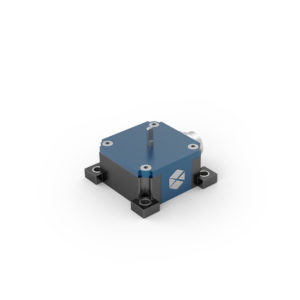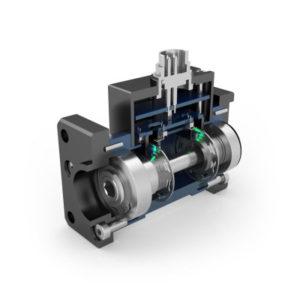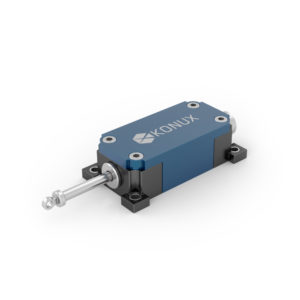If It Ain’t Broke Don’t Fix It? Think Again…

The Power of Predictive Analytics to Improve Maintenance and Reliability in the Industrial Sector.
If It Ain’t Broke Don’t Fix It? Think Again…
According to the World Economic Forum, the next 10 years will bring digital transformation to the industrial sector.[i] One way that this will occur is through the power of predictive analytics to improve the maintenance and reliability of industrial equipment. According to ABI Research, the maintenance analytics market is growing with a CAGR of 22% and is expected to reach a market size of $24.7 billion by 2019.[ii]
Traditionally, industrial maintenance is driven in two ways: reactive/unplanned maintenance as a result of a breakdown, and preventative/planned maintenance as a result of time-based factors.[iii] Digital transformation offers a new mechanism of determining when to do preventative maintenance by assessing the conditions of the equipment in real-time with sensors rather than periodic checks by people, and then using predictive analytics to determine the expected failure points of the equipment and the optimal time to invest in maintenance. This transformation could improve asset performance, up-time, and reliability, while also lowering operating and maintenance costs.[iv]
KONUX, a Munich-based start-up, has developed advanced sensor technology and a software platform to enable predictive maintenance in the industrial sector, including applications for railway infrastructure, industrial pumps, and pipeline monitoring.[v] These monitoring and maintenance tasks have often involved dangerous conditions and challenging environments, as a result KONUX offers not only improvements to operations and maintenance but also fewer risks.[vi]
KONUX has approached this problem by developing a holistic package, customized for each client, including sensors, analytics, and a user-friendly software interface. For example, KONUX developed a sensor system in conjunction with the German railway, Deutsche Bahn, to provide remote evaluation of their infrastructure. This is expected to reduce their maintenance costs by up to 25%.[vii] Their collaborative approach working with key partners is a compelling choice that will facilitate their entry into this market, since in many cases the sensor technology needs to be integrated into existing infrastructure. Additionally, I think it was a good choice to make their first move in an industry that only has a few key players, such as railways. Track-ownership is typically nationalized or privatized with a small number of players, this offers KONUX broad reach once they have developed a partnership. For example, Deutsche Bahn operates in over 130 countries, and manages 1,054 million kilometers of railway.[viii]
Although KONUX has been focused on an integrated solution, I believe that going forward they should focus on the hardware-side to further develop their competitive advantage of cutting-edge sensor technology, rather than diluting their efforts by also investing in advanced analytics and software. Many industrial giants, such as IBM, Siemens, and GE are investing heavily in analytics and software capabilities, as a result I believe KONUX’s unique value lies in their sensor technology and ability to generate useful input data. For example, Siemens Mobility Data Services has also launched a one year pilot with Deutche Bahn to provide algorithms and a user-friendly interface to make better maintenance decisions. [ix] These larger players are integrating their solutions into the existing business processes and software tools used in industry, compared to KONUX’s stated-alone software.
In addition to focusing on their sensor technology, I believe KONUX can take a two-pronged approach to developing future strategic partnerships. They can continue to expand in consolidated industries such as railways to upgrade existing infrastructure. Additionally, I believe KONUX should work to build partnerships with equipment manufacturers. This will allow them to integrate their sensor technology into the next generation of industrial equipment. For example, Caterpillar’s Innovation Lab is aiming to embed sensing technologies in their equipment to provide advanced maintenance solutions for their customers.[x] However, to-date Caterpillar has invested in building an analytics platform through an investment in start-up Upstart which relies on existing data sources, rather than building out additional sensing technology.[xi] As a result, the opportunity is open for organizations like KONUX to continue improving and integrating new sensors to provide the data necessary for predictive maintenance to be effective.
Word Count: 651
References:
[i] World Economic Forum. Industrial Internet of Things: Unleashing the Potential of Connected Products and Service. Accessed from: http://reports.weforum.org/industrial-internet-of-things/
[ii] ABI Research. Maintenance Analytics to Generate $24.7 Billion in 2019, Driven by Predictive Maintenance and the Internet of Things. (Mar 28 2014). Accessed from: https://www.abiresearch.com/press/maintenance-analytics-to-generate-247-billion-in-2/
[iii] Maintenance Assistant. Preventative vs Predictive Maintenance (2013). Accessed from: https://www.maintenanceassistant.com/blog/short-guide-preventive-predictive-maintenance/
[iv] US Department of Energy. Operations & Maintenance Best Practice Guide: Chapter 6. http://energy.gov/sites/prod/files/2013/10/f4/OM_6.pdf
[v] KONUX. Company History & Philosophy. https://www.konux.com/company/
[vi] Gaskell, A. New Startup Aims to Bring Rail Maintenance to the 21st Century. Forbes (April 27 2016). http://www.forbes.com/sites/adigaskell/2016/04/27/new-start-up-aims-to-bring-rail-maintenance-into-the-21st-century/#37a9ddc21429
[vii] KONUX. Digitizing Railway. Accessed from: https://www.konux.com/applications/sensors-digital-railway/
[viii] Deutche Bahn. At a glance: Facts and Figures in 2015. Accessed from: http://www.deutschebahn.com/en/group/ataglance/facts_figures.html
[ix] Briginshaw, D. ICE predictive maintenance trial launched. International Railway Journal (Oct. 25 2016). Accessed from: http://www.railjournal.com/index.php/technology/db-and-siemens-launch-predictive-maintenance-trial.html
[x] Construction Equipment. Three Questions with Gwenne Henricks, Chief Technology Officer, Caterpillar. (Feb 20 2015). Accessed from: http://www.constructionequipment.com/blog/three-questions-gwenne-henricks-chief-technology-officer-caterpillar
[xi] Fortune. Caterpillar digs in to data analytics – investing in hot startup Uptake. (Mar 15 2015). Accessed from: http://fortune.com/2015/03/05/caterpillar-digs-in-to-data-analytics-investing-in-hot-startup-uptake/
Images: Sourced from KONUX website – http://www.konux.com






This is a really great article that highlights how digital technology can be applied to a very traditional, capital-intensive sector. Clearly, there is a lot of value in better predicting maintenance and repair work while reducing the risk involved in these evaluations. What I would like to understand better at this point is how accurate the current predictive analytics are with respect to accuracy. I imagine that is is very difficult to develop sufficient amounts of data input to accurately identify potential maintenance risk across different industrial equipment, especially because this equipment is built to last for many years before significant repair is required.
For KONUX in particular, I would be worried that large players like Siemens and GE have a competitive advantage, as these companies manufacture and service their own products (e.g., trains) such that they could easily provide the sensors and analytics software with their products.
Awesome article. I also share Hannah’s concern that the incumbent players have a natural advantage in their ability to build sensors and analytics into their own products. That said, I do think technology increasingly allows for innovation in analytical tools that are actually not physically located on the machinery. Satellite imaging has improved to the point that satellites can monitor the performance of equipment and report back to HQ which units are performing optimally and which are in need of service. Obviously, a satellite player is better positioned to offer these analytical services than an industrial player. The rise of powerful imaging technology also creates interesting questions around what constitutes competition and what constitutes privacy. Would McDonald’s using satellite imaging to track customer traffic at Burger King parking lots be a thorough analysis of a competitor, just plain creepy, or a little of both? From a legal perspective, should McDonald’s be allowed to pursue satellite imaging of Burger King parking lots?
“Although KONUX has been focused on an integrated solution, I believe that going forward they should focus on the hardware-side to further develop their competitive advantage”. This is an interesting thought and the more I think about it the more I agree with you. I completely feel that this space is about being the first mover since the sensors being installed are not some technological moat. So if they concentrate on getting hardware installed, they can create a moat by being the first mover and signing long term maintenance contracts.
Interesting article. It is exciting to think about the potential cost savings from predictive maintenance. In relation to railway infrastructure, I came across another example proposed for the public transit system of Washington DC (http://greatergreaterwashington.org/post/6878/the-inglorious-path-back-to-metro-glory-maintenance/). An issue there though was that management has not been fully on board to implement predictive maintenance, despite having software that is capable of supporting it. Predictive maintenance will require a culture change for some industries.